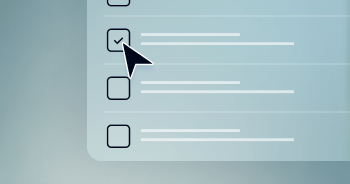For the nearly 66,000 people living with epilepsy in Colorado and Wyoming, Sarah Klein and the other staff of the Epilepsy Foundation, provide education, connection, and empowerment. While you might think that you know what a seizure is, or what triggers one, many mainstream assumptions are not accurate. We were honored to have Sarah join us for a Spotlight Session to share some insights on living with epilepsy and practices for inclusion.
Here are some top takeaways from this session:
1. Seizures don’t always look like they do in the movies
“Probably the biggest misconception is that a seizure is a convulsion, or that there's only one type of seizure. That's what you see in movies - someone has a seizure, and they fall on the floor and they're convulsing. But that's not actually true. You know, a seizure is just a misfiring of the electrical impulses in the brain. So depending on where in the brain that's happening and how big of an electrical storm there is, can really impact what a seizure looks like. So sometimes people just have a lapse of awareness. Sometimes only one part of their body is affected.”
Most of us have that image from Hollywood of someone convulsing on the ground. This is a dangerous misconception because if someone is experiencing a seizure and needs help, we might not recognize it if it doesn’t match the version we know from the movies. The Foundation provides education about epilepsy so that everyone can be better informed and therefore better prepared to help.
2. Experiences need to be accessible, not just physical places
“I think about giving everyone access to not just physical spaces, which I think is kind of the obvious piece of accessibility, but to information and to experiences. To make those things as available and as meaningful to as many people as possible. So it's one thing to let a kid with epilepsy go to camp but to make it meaningful so that they know that they're not alone in the world and that they're building relationships with people who know exactly what they're going through, that’s accessibility.”
There’s a difference between accommodation and inclusion. Accessibility isn’t just about “allowing” someone with epilepsy to participate in an activity, it’s about making sure that they feel safe, welcome, and that their needs are not a burden. This is true for all people! No one wants to feel like a burden on others, especially about something as sensitive as an invisible disability.
3. Not all disabilities are visible
“Epilepsy is often invisible, and so you might not ever know that a person that you're interacting with or a friend or a colleague or whatever is living with epilepsy. And so I think that to approach relationships with empathy or a desire to understand what their situation is like is really important because if you're living with something that people don't see, they may not always think to provide accommodation or accessibility in the way we've been discussing.”
Sometimes having an invisible disability like epilepsy can present different challenges than we might expect. Since their disability is not obvious, they often need to verbally share that they have epilepsy and explain what they need to be safe. It’s hard to make our needs known and ask for help - this goes for everyone. By having a more empathic and sensitive approach to all people, we can create safer environments for people with epilepsy to share.
4. Inclusion is about more than just marketing
“I would like to see on a global scale, more people with disabilities included, not just in marketing, like when we've got people of varying abilities in ad campaigns, but at a higher level of inclusion. So that people with disabilities are employed and are on Boards of Directors and are really in leadership roles at companies to provide a more diverse and well-rounded perspective from the top down.”
It’s a great start to feature people with different abilities in ads and to promote inclusion with marketing, but that’s just the beginning. To amplify the voices and contributions of all different people, diversity, and inclusion need to be fully integrated into our businesses, schools, and social structures.
Shine on
We are so grateful to have these amazing Spotlight Sessions in which we learn about the many important organizations and movements that are changing lives every day. Thank you to Sarah Klein and her team for all of the work that they do to help make the world more inclusive for people with epilepsy.
If you’d like to watch more Spotlight Sessions, you can find them all here.
If you are a disability advocate or have a nonprofit organization and want to share your story with the world, reach out to accessiBe’s Nonprofit Partnership Program so we can get to know you better.


